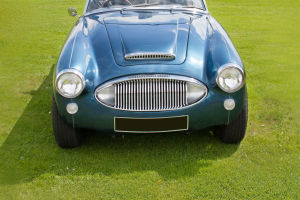The evolution of automotive engineering has significantly transformed the understanding and definition of the term "chassis" over time.
Initially, the chassis referred solely to the frame portion of a vehicle, serving as the fundamental structure that integrated and mounted essential components such as the engine, transmission, driveshaft, suspension, tires, and steering wheel.
However, as automotive technology advanced and manufacturing techniques evolved, the concept of the chassis expanded to encompass a broader range of systems and functionalities.
In the past, a single chassis could be utilized to produce multiple vehicle models with differing appearances and names. This practice led to a shift in the perception of the chassis from a specific frame component to a more generalized platform. The modern car body structure has transitioned towards a frameless load-bearing design, where chassis components are directly mounted onto the body itself. As a result, the chassis now primarily consists of the drivetrain, responsible for transferring power from the engine and transmission to the tires, as well as the tire-mounted suspension, steering, and braking systems.
Today, the term "chassis" as a platform encompasses several interpretations, including the main part of the vehicle onto which chassis components can be mounted, the section of the vehicle housing the suspension, or the portion of the vehicle terminating at the floor level. This conceptual expansion has broadened the definition of the chassis to encompass both the body and drivetrain, reflecting the interconnectedness of various automotive systems.
An automobile typically consists of several major components, including the engine, chassis, body, electrical system, and more. Among these, the chassis specifically refers to the combination of transmission, driving, steering, and braking systems. Its functions encompass supporting and installing the vehicle body and engine, shaping the overall vehicle form, bearing engine power, and ensuring smooth vehicle operation. In non-load-bearing frame structures, the chassis installation involves mounting the engine, transmission, and other components onto the overall structure. Once the seat is installed, the vehicle becomes drivable. This approach is commonly observed in heavy vehicles like trucks, where the body requires substantial strength and durability.
The chassis components of a front-wheel-drive vehicle are typically divided into two main sections: the front half and the rear half. The primary components include the engine, transmission, driveshafts, suspension, tires, wheels, steering system, and brakes. In the front half, the frame serves as the foundation, with the suspension, driveshaft, and braking system securely affixed to it.
The powertrain plays a pivotal role in transmitting engine power to the drive wheels. It consists primarily of the transmission, driveshaft, and differential. In front-wheel-drive configurations, the transmission and differential are integrated, facilitating direct power transfer to the driveshaft and ultimately to the drive wheels. Conversely, in rear-wheel-drive setups, power is transmitted to the rear driveshaft first before being redirected to the drive wheels via the differential.
Operating a vehicle demands significant torque management, which is achieved through the main reducer and differential. The main reducer, comprising active and driven gears, works in conjunction with the differential to regulate speed and torque distribution to the drive wheels. During turns, the differential ensures that the left and right drive wheels receive appropriate speed adjustments, compensating for differences in travel distances and maintaining vehicle stability.
The concept of the chassis has evolved from a simple frame component to a comprehensive platform encompassing the body and drivetrain. Its significance lies in its role as the structural foundation of the vehicle, supporting critical components and ensuring optimal performance and functionality.


